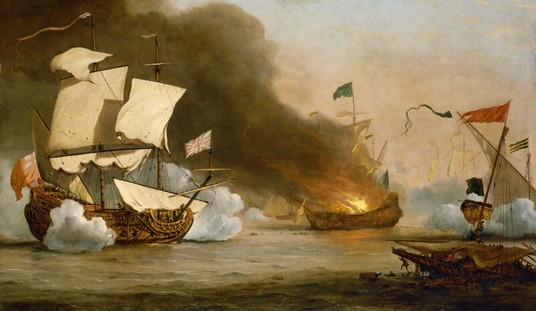Daniel Henniger, writing in the Wall Street Journal, asks, “can Barack Obama talk his way onto Mount Rushmore?”
He might. In fact, if just half of what Mr. Obama has said that he, we or the world should do comes to pass, he’s going straight to that mountain. More than any U.S. president, The Speech is the primary vehicle of Barack Obama’s politics. Web sites have been erected as shrines to his speeches. Obamaspeech.com offers the text of 100 Obama speeches back to 2002. The electronic library stops at January 2009, when the White House site takes over. Currently it’s up to 36 pages listing the titles alone of the president’s remarks and speeches. …
The first thing to be said about this body of work is that it is astonishingly good. Even by the something-for-everyone standards of political speech, much of Mr. Obama’s somethings are strong and worth hearing.
Here’s the problem: Mr. Obama is not the nation’s Speaker in Chief. He’s not a senator, and he’s no longer a candidate. He’s the president. A president’s major speeches are different than those of anyone else. That high office imposes demands beyond the power of a podium. Inspiration matters, but the office also requires acts of leadership. A U.S. president’s words must be connected to something beyond sentiment and eloquence. Too much of the time, Barack Obama’s big speeches don’t seem to be connected to anything other than his own interesting thoughts on some subject.
So is Barack Obama all talk and no walk? A number of management concepts such as Situational Leadership and Transformational Leadership theory describe the techniques that this kind of approach aims for. In other words, there is method to this apparent verbosity.
Transformational Leadership starts with the development of a vision, a view of the future that will excite and convert potential followers. This vision may be developed by the leader, by the senior team or may emerge from a broad series of discussions. The important factor is the leader buys into it, hook, line and sinker. … The next step, which in fact never stops, is to constantly sell the vision. This takes energy and commitment, as few people will immediately buy into a radical vision, and some will join the show much more slowly than others. The Transformational Leader thus takes every opportunity and will use whatever works to convince others to climb on board the bandwagon. In order to create followers, the Transformational Leader has to be very careful in creating trust, and their personal integrity is a critical part of the package that they are selling. In effect, they are selling themselves as well as the vision.
In parallel with the selling activity is seeking the way forward. Some Transformational Leaders know the way, and simply want others to follow them. Others do not have a ready strategy, but will happily lead the exploration of possible routes to the promised land.
The route forwards may not be obvious and may not be plotted in details, but with a clear vision, the direction will always be known. Thus finding the way forward can be an ongoing process of course correction, and the Transformational Leader will accept that there will be failures and blind canyons along the way. As long as they feel progress is being made, they will be happy. The final stage is to remain up-front and central during the action. Transformational Leaders are always visible and will stand up to be counted rather than hide behind their troops. They show by their attitudes and actions how everyone else should behave. They also make continued efforts to motivate and rally their followers, constantly doing the rounds, listening, soothing and enthusing.
But maybe this approach is best suited to seizing power, in transferring influence and ideas from one set of holders to another set of holders. This leadership style may be less useful for actually doing things. In fact the output of a transformational leader is simply the change vehicle. What happens next is often not his department. The article quoted above says, “in some respects, then, the followers are the product of the transformation.” The significance of the words “we are the people we’ve been waiting for” may not have been fully grasped by those unfamiliar with the transformative concept. But what happens when the situation demands a leader must actually do something, such as balance a budget, win a war, or reform a bureaucracy? What happens when the workings of reality, rather than the charismatic, is driving the situation? Theodore Roosevelt argued that in those situations effective action was transformational and inspirational in itself. That action, not words, had a quality all its own.
It is not the critic who counts; not the man who points out how the strong man stumbles, or where the doer of deeds could have done them better. The credit belongs to the man who is actually in the arena, whose face is marred by dust and sweat and blood; who strives valiantly; who errs, who comes short again and again, because there is no effort without error and shortcoming; but who does actually strive to do the deeds; who knows great enthusiasms, the great devotions; who spends himself in a worthy cause; who at the best knows in the end the triumph of high achievement, and who at the worst, if he fails, at least fails while daring greatly, so that his place shall never be with those cold and timid souls who neither know victory nor defeat. Shame on the man of cultivated taste who permits refinement to develop into fastidiousness that unfits him for doing the rough work of a workaday world.
There may be something to the idea of being good at action. Teddy Roosevelt actually made it to Mount Rushmore.











Join the conversation as a VIP Member